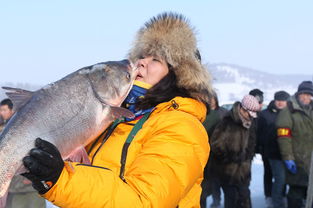Introduction:
The enchanting world of night fishing offers a unique and serene experience for anglers seeking solitude and the thrill of catching fish under the moonlit sky. Among the diverse species that can be targeted during these twilight hours, the common carp (Cyprinus carpio) is a favorite for many. Known for its strong fighting spirit and delicious taste, carp fishing at night can be both challenging and rewarding. In this article, we delve into the art of nighttime carp fishing, offering expert tips and techniques to help you master the night fishing experience and increase your chances of hooking into these majestic creatures.
Understanding Carp Behavior at Night:
Carp are known for their nocturnal habits, making them prime targets for night fishing. Understanding their behavior during the night is crucial to your success. Here's what you need to know:
Feeding Patterns: Carp are active feeders during the night, particularly during the hours of 10 PM to 3 AM. This is when they are most likely to be found near the shore or in shallow waters, searching for food.
Water Temperature: Carp are cold-blooded and rely on water temperature to regulate their metabolism. They prefer cooler waters, typically between 60°F to 70°F (15°C to 21°C). Choose locations where the water temperature is within this range for the best results.
Light Conditions: Carp are less sensitive to light during the night, but it's still important to minimize your own light exposure to avoid spooking them. Use headlamps or red glow sticks to illuminate your area.
Choosing the Right Equipment:
To effectively target carp at night, you'll need the right equipment. Here are some essential items:
Rod and Reel: A medium-heavy rod with a fast-action tip is ideal for carp. Match it with a durable, high-quality reel capable of handling the fight without breaking.
Line: Use a monofilament line with a thickness of 10 to 15 pounds. This line offers a good balance between sensitivity and strength.
Hooks: Choose a size 6 to 10 hook, depending on the size of the bait and the local regulations.
Bait: Carp are opportunistic feeders and will take a variety of baits. Common options include corn, worms, nightcrawlers, and dough baits. Experiment with different baits to see what works best in your area.
Leader and Swivel: A 6 to 12-inch leader with a swivel will help prevent line twist and keep your bait in place.
Techniques for Nighttime Carp Fishing:

Location, Location, Location: Identify areas where carp are known to congregate at night. This could be shallow water near the shore, around structure, or in specific spots where you've had success in the past.
Presenting the Bait: Cast your bait out with a gentle, wrist-flick motion to avoid spooking the fish. Allow the bait to sink naturally to the desired depth before beginning to retrieve it.
Patience is Key: Night fishing requires patience. Wait for the carp to approach your bait before making any sudden movements. Avoid jerking or twitching the rod as this can scare them away.
Adjusting the Speed: The speed at which you retrieve your bait can be a crucial factor. A slower retrieve can mimic natural movement, while a faster retrieve can attract the attention of more aggressive carp.
Using a Bobber: A float or bobber can be an excellent tool for night fishing. It allows you to see when the carp are taking the bait and gives you a better idea of the depth at which they are feeding.
Night Vision Aids: Consider using night vision equipment to enhance your visibility in low-light conditions. This can be particularly helpful in identifying fish and structures in the dark.
Conclusion:
Nighttime carp fishing is a rewarding pursuit that requires patience, practice, and a deep understanding of the fish's behavior. By utilizing the tips and techniques outlined in this article, you'll be well on your way to mastering the art of night fishing and reeling in these majestic creatures. Remember, the key to success lies in understanding your target species, using the right equipment, and adapting your approach to the conditions. Happy fishing!












